Anchoring is an operation on board that involves dropping a metallic object with “claws” called the anchor. It is attached to a chain connected to the ship and held at the bottom of the sea.
Safe and proper anchoring maintains the ship’s anchor and its fittings in good order. Additionally, it keeps the vessel steady in a particular area despite the forces of winds, currents, and swell.
Safe anchoring doesn’t end when the anchor is holding fast to the seabed and the bow stopper is positioned.
A vigilant observation against the proximity of nearby vessels and the ship’s swinging circle must be frequently carried out.
Moreover, the OOW must constantly watch out for sudden changes in weather conditions.
Easy as it may sound, many incidents have been recorded from time to time involving anchoring gone wrong. We will discuss how to prevent them here.
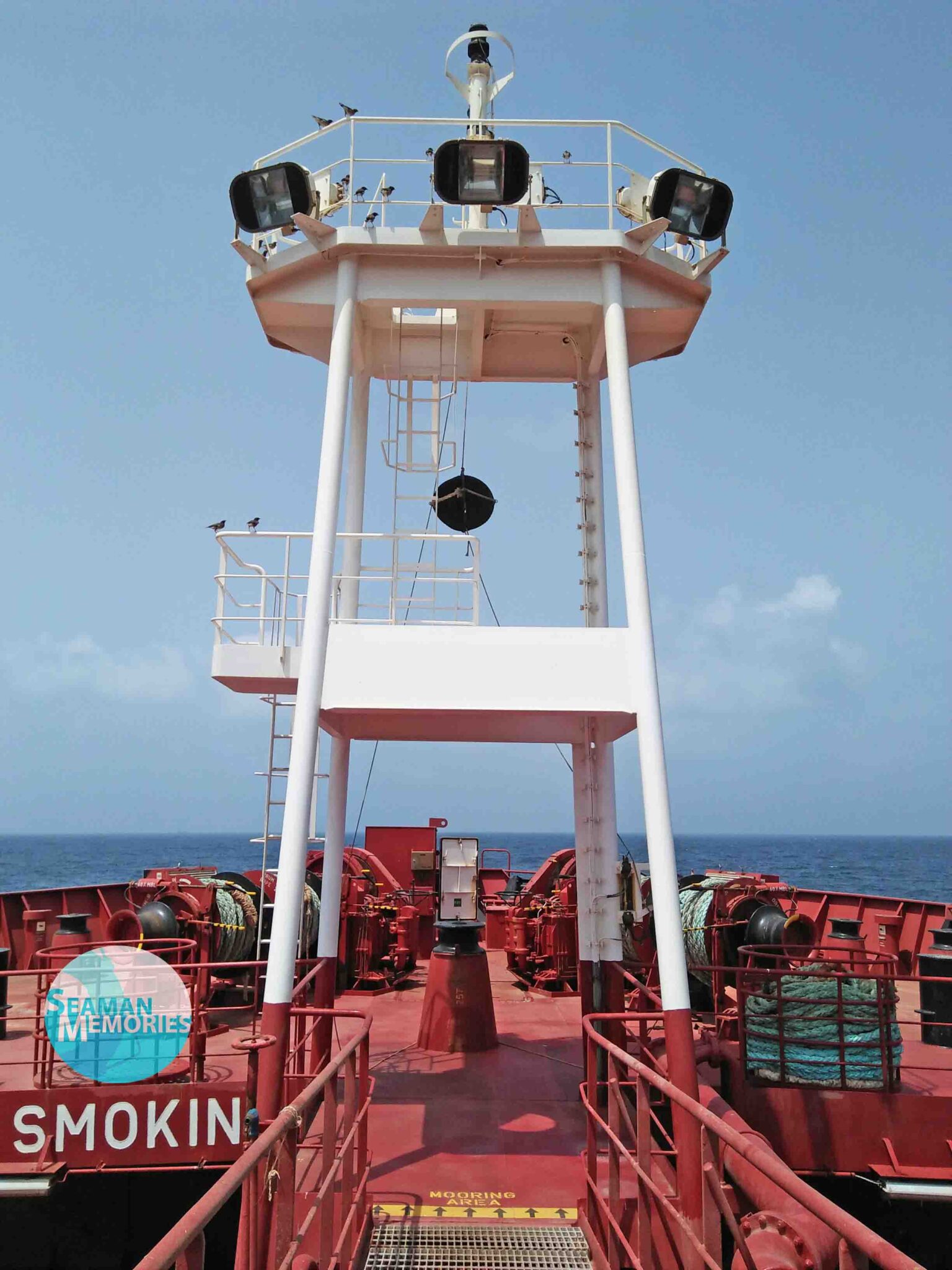
Why Do Ships Anchor?
Ships anchor for many reasons. Some of them are as follows;
- No Voyage information.
- Awaiting berth/ terminal/ shore readiness.
- Bunkering, crew change, stores, and provision.
- Ship-to-Ship Transfer operations.
- The port is closed.
- Waiting out a storm.
- Breakdown or damage to hull or machinery.
- Pilot/ tugboat/ mooring gangs strike or unavailable.
- Underwater inspection.
- Emergency anchoring.
- Mooring involving anchors.
What Could Go Wrong?
Proper anchoring is very important to the safety of the crew and ship. Scenarios involving bad anchoring help us appreciate good anchoring techniques.
- One evening, we were safely anchored when all of a sudden, a vessel in front of us broke her engines just after heaving up her anchor.
She was drifting directly towards us with no sign of stopping. Luckily, the same ship managed to start her engines when about 50 meters from our bow.
- In another situation, a miscommunication between the crew controlling the brake and the team leader of the forward anchor party resulted in dropping 8 shackles in three minutes.
- Still, the securing pin for the bow stopper was bent due to excessive use of engines astern during a calm afternoon.
- Lastly, only the shank of the anchor was brought up.
Anchoring Techniques for the Bridge Team
The Bridge Team is composed of the Captain, the Officer on Watch (OOW), and the helmsman. Depending on the company or Captain, it can just be the Captain and OOW.
The Bridge Team plays a very important role in successful anchoring.
They must consider all information about the port, anchorage area, restrictions, depth of the water, weather conditions, tides, currents, and the proximity of navigational hazards.
Equally important is knowing how dense the anchorage area is and understanding the movement of ships around them.
For example, if the vessels around you start to drag, what will be your best course of action? How would you react when other ships also take action?
Once these are obtained, the Bridge Team must create a plan of approach to the anchorage area.
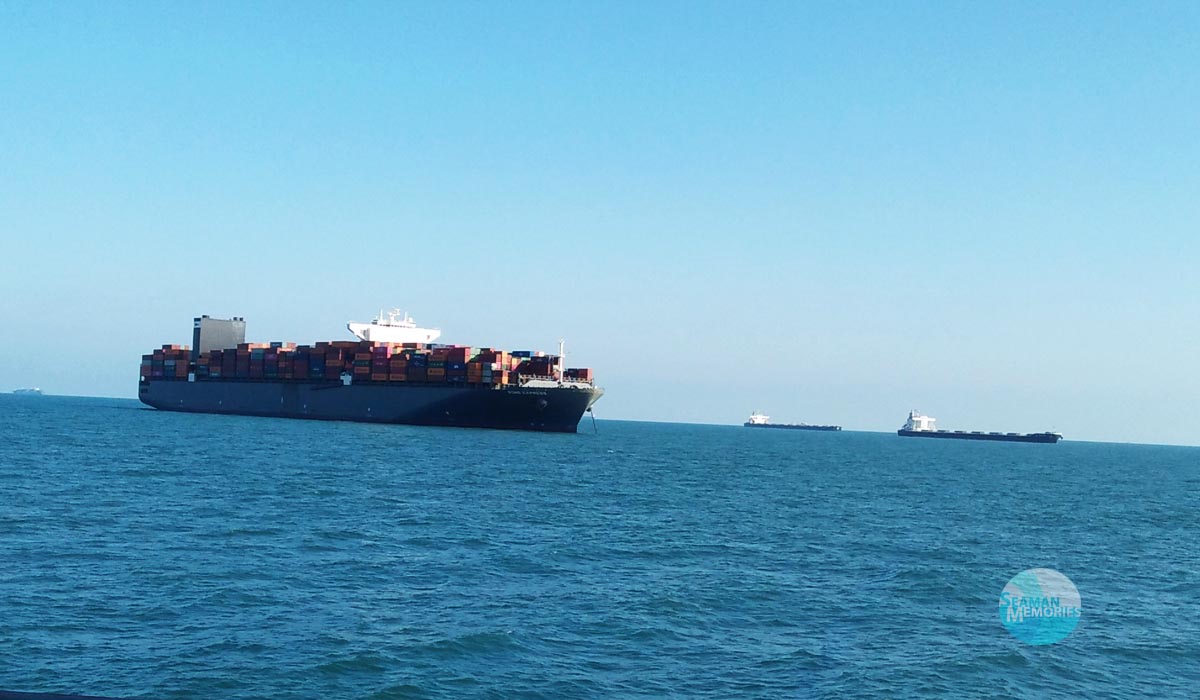
Approaching the Anchorage Area
The Master or OOW may find it helpful to ask the Port Control for the position where he can anchor. Otherwise, he can pick any position which he deems safe considering the information he gathered.
Tight anchorage areas pose a greater challenge when maneuvering especially if your ship is big like oil tankers.
The vessel must gradually reduce her speed while approaching the anchorage area until she reaches her position.
Normally, the bow must face the wind, current, or a combination of both. Observing the heading of other ships at anchor can help you which direction to face.
Once the ship is in her desired position, the anchor may then be dropped while greatly considering her speed to be less than 0.3 knots.
Any more and it could damage the anchor fittings (chain, gears, windlass, anchor itself, etc.).
As a rule of thumb, drop the anchor when the ship is stopped, nearly stopped or slightly moving astern.
The Forward Anchor Party
Anchoring involves two teams- the Bridge Team and the Anchor Party.
The Bridge Team takes care of the external information needed before anchoring.
The Anchor Party on the other hand is in charge of dropping the anchor following the commands from the Bridge.
Preparing Forward
The Anchor Party consists of a Bosun or Pumpman and another crew at the windlass. Sometimes, it can be the OOW and Bosun or the Chief Officer and Bosun.
There is no hard and fixed rule for who will be at the anchor party as long as they are well-experienced. You may have to check your company policy or shipboard duties and responsibilities regarding this.
The Bridge Team normally advises the Anchor Party at least 30 minutes before dropping the anchor.
Sometimes, it could be much earlier depending on the traffic density, visibility, and sea condition.
Once they are informed, they will prepare the forward station.
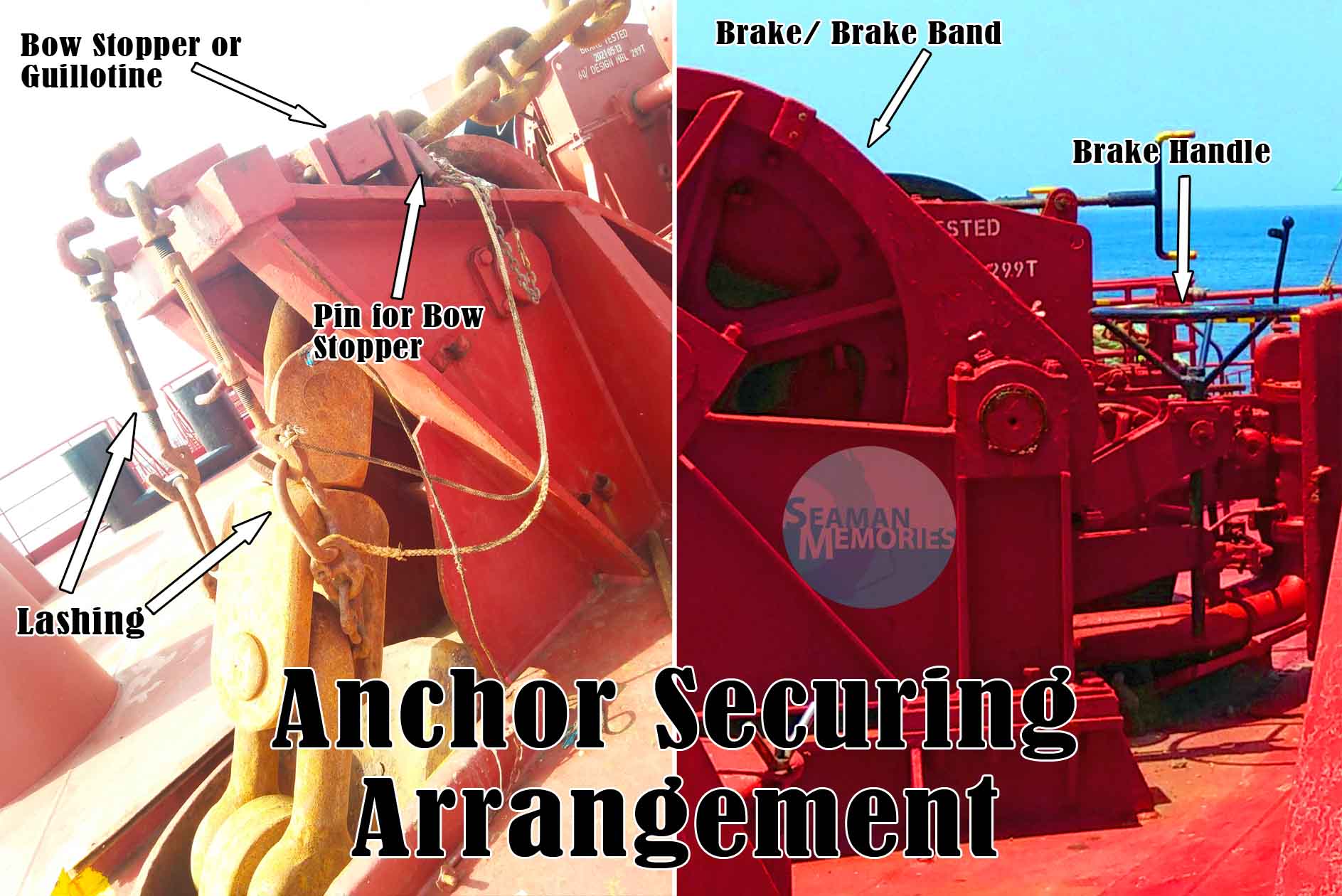
Anchoring Equipment
The anchor ball and a flag for the chain are prepared. A flag is placed to the side, normally on the chain later on.
They must also prepare life rings.
Additionally, ventilation flaps for the forecastle and bow thrusters must be open to allow circulation of air when the hydraulic motors are started.
Anchor lashings are then taken out and a visual inspection of the windlass, chain, anchor, stopper, brake, and anchor fittings must also be carried out.
Engaging and disengaging the gears shall be made to see if they are not stuck.
Once these checks are done, the hydraulic motors are switched on and checked for any abnormal sounds and visuals.
Dropping the Anchor
Anchoring is a team effort. Effective communication plays an important role in its success.
When the above procedures are made, the next thing to do is to drop the anchor.
Before dropping the anchor, the Bridge team may deem it necessary to lower it just above the water.
This is to exercise your brake and windlass and ensure that they are not stuck.
Additionally, before dropping it, you can lower it 1 shackle in the water or just walk it back.
Why?
Depth of the Water
Water depth is very important to consider when dropping the anchor.
As a rule of thumb, if the depth of water is greater than 25 meters, it’s advisable to pay more shackles so the distance between the anchor and the sea bottom is half a shackle before releasing the brake.
Meanwhile, if the depth of water is less than 25 meters, the anchor can be lowered down just above the water before letting go.
Dropping the anchor at a tremendous depth is like dropping a heavy object attached to a rope at the top of a building.
The fall accelerates in a matter of seconds and the brake may not be able to hold it. This damages the windlass and pays out the anchor down to the bitter end.
If unlucky, you may lose the whole anchor and chain!
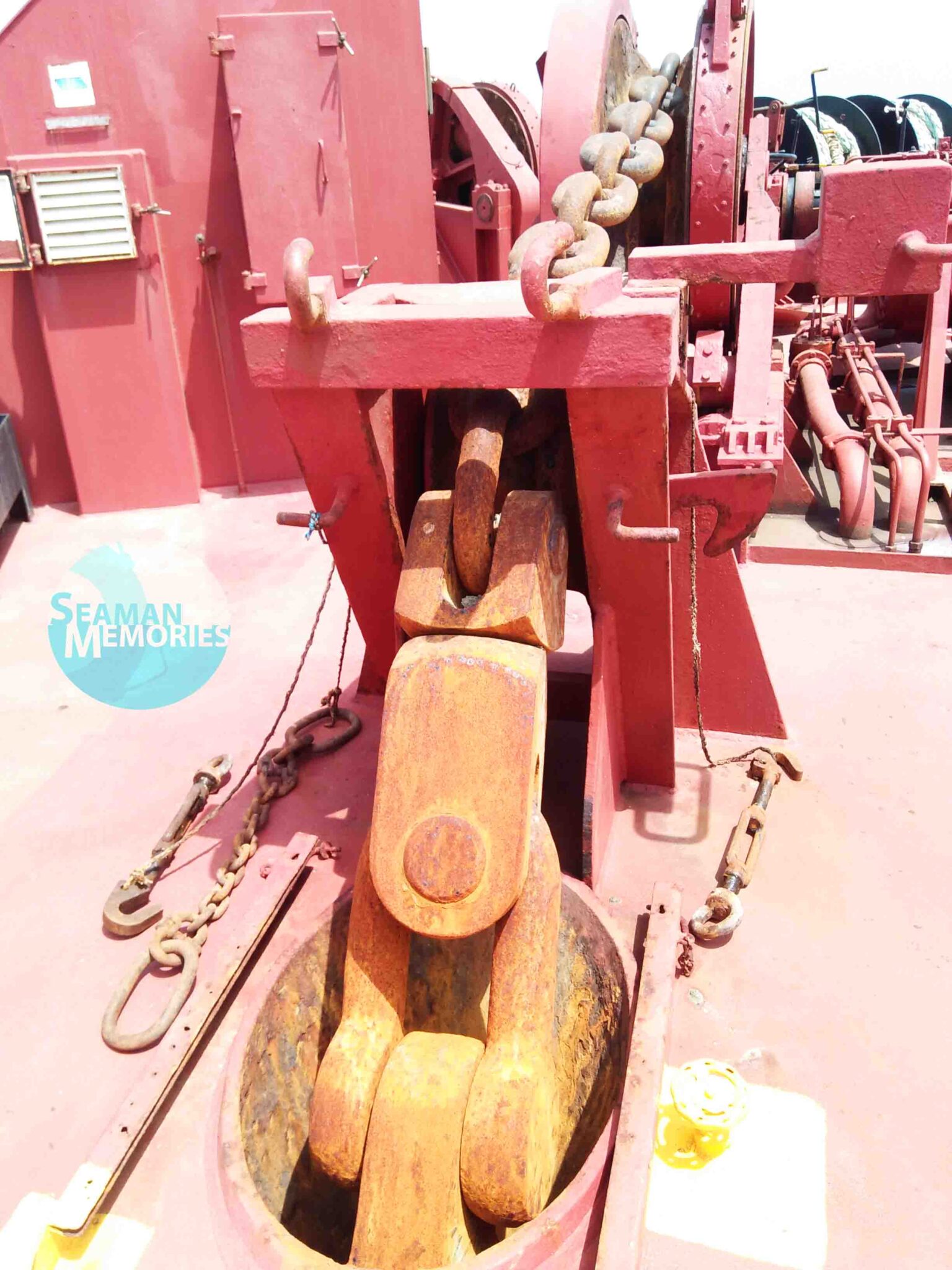
How do you know if the Vessel is stopped, nearly stopped, or going astern?
Anchoring can be deceptively easy. Not knowing a few techniques could raise doubts about the ship’s actual position.
We already know a few things and we did due diligence in gathering the right information.
When dropping, the ship must be stopped or nearly stopped. But how do you know that?
Relying on your equipment like the GPS or speed log is not enough.
Why?
Because the GPS signal is delayed. If it reads out that the vessel is already stopped or slightly moving astern, then your information is already late. Worse, it could be inaccurate!
Same with the speed log. It may register false signals due to the disturbances in the sea bed and the turbulence in the water.
Check the Waters
Remember, when you run the engines astern, it doesn’t automatically translate that the vessel immediately moves astern. You are not in a car.
The best way to tell if the vessel is stopped or nearly stopped is to observe the ship’s side.
Initially, when you put the engines astern, you will notice the vessel’s wake is being left behind because of the ship’s momentum.
As the ship slowly stops, you will see these wakes gradually catch up with the ship. If these wakes reach amidships, it means that your vessel is dead in the water.
If it reaches past forward, it means that you are now slowly moving astern.
Now it’s time to drop the anchor.
Controlled Drop
As soon as the Bridge gives permission to drop the anchor, the brake is released slowly until the anchor drops.
When it’s so, just keep the brake open and let the chain payout.
Normally, the chain stops releasing after two or three shackles. But when you see that the payout becomes faster, slowly close the brake until it slows down.
If it’s slowing down fast, gradually open the brake.
Rinse and repeat. This is how you control the drop.
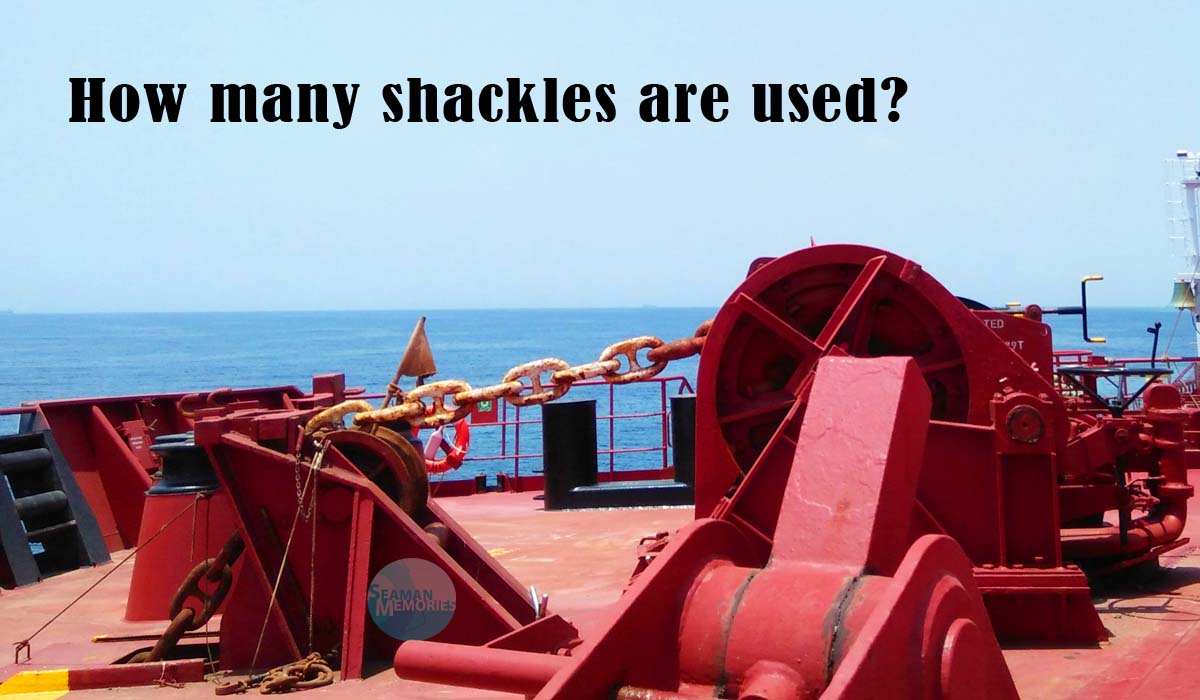
One by One
After the first two or three shackles in the water, the chains may be piling up on top of each other on the sea bed.
This creates a risk of fouling the anchor especially if you are not controlling the drop.
To avoid this one, it’s a good seamanship to close the brake when it reaches the the second or third shackle.
Allow the chain to stretch while the vessel moves astern.
If you see that the cable is slowly becoming tight, open the break and let the next shackle payout. As soon as you see the next shackle comes out, close the brake again to stretch the chain.
Rinse and repeat until you reach the desired number of shackles.
Walking Back the Anchor
Anchoring does not always mean dropping the anchor. Sometimes, you let the windlass do the job with the help of hydraulic motors.
This is called walking back the anchor.
Walking back the anchor is a method of lowering the anchor under power. In this strategy, you use the winch while engaged to the windlass for anchoring from start to finish. It’s a very controlled anchoring technique.
The brake is kept open the whole time and the chain is paid out steadily until reaching the number of shackles you want.
The only downside to this is that the winch gears could be destroyed if there is too much astern speed.
Additionally, this technique should not be used when anchoring with heavy swells as the pitching and rolling could create sudden tension on the chain thereby breaking the winch.
Scope
The scope is the ratio between the depth of the water and the number of shackles you use.
Many textbooks and articles suggest that the scope should be at least 5 times the depth of water.
For example. If you have a depth of 25 meters, the number of chains to be paid out is 4 and a half or 5 shackles. 25 meters X 5 = 125 meters /27.432 meters (equivalent to 1 shackle) = 4.5 shackles
Others have different computations.
However, this is still dependent on many factors;
- Anchorage traffic density.
- Nature of seabed.
- Weather forecast.
- Duration at the anchorage.
- The proximity of navigational hazards.
Holding Power
The more shackles you use, the better the holding power of your anchor.
This is because the weight of the chain creates a catenary. When the chain is close to the sea bottom, the flukes dig deeper resulting in more holding power.
The longer chain also serves as a shock absorber during rough weather at the anchorage.
The scope should not always be more than 5 times the depth of water because…
The general rule is not always applicable in all scenarios.
We were anchored somewhere in France on the Mediterranean coast. Due to our captain being very cautious, we put 8 shackles in the water.
But when it was time to heave up the anchor, we were delayed because our chain was covered in mud starting from the 5th shackle all the way to the anchor.
We have to heave it slowly so the anchor wash could wash it off.
Because if we don’t remove the mud, it may get stuck in the bilge line.
Reporting the Direction and Stay of the Chain
Determining the direction of the chain gives the Bridge Team a clear picture of the situation with the anchor.
Since the bridge has no view, it is the responsibility of the forward team to be their eyes.
Chain direction can be summarized below.
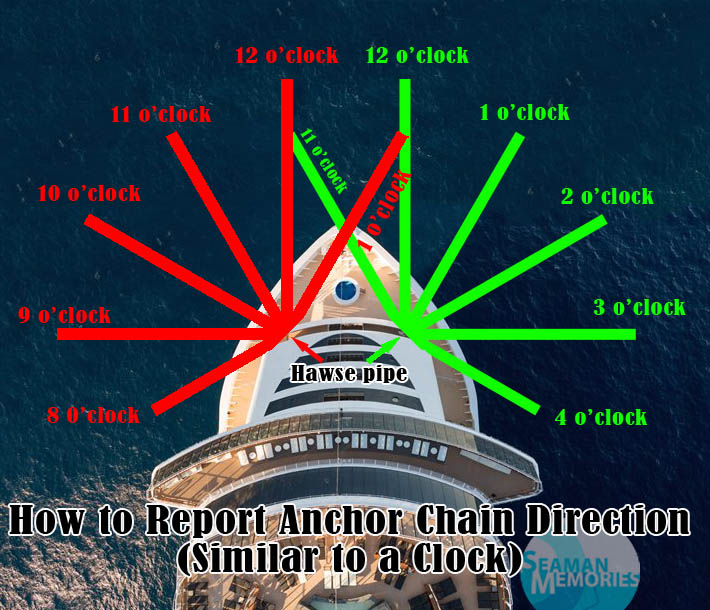
Reporting the tension of the anchor chain is also equally important. If the tension is too tight, the ship may be aggressively moving astern, this must be avoided to avoid damaging the anchoring equipment.
If the chain stays up and down, the brake may not render because there is no tension.
Or even if it renders, it may only pile on top of each other creating a risk for fouling.
Anchoring technique: Reporting the stay of the chain is summarized below:
Up and Down – the chain is perpendicular to the water level.
Slack – anchor chain creates a slight angle to the water level.
Moderate/ Medium Stay – there is little tension on the chain. Its angle is greater than that of Slack at about 30 degrees to the water level.
Short Stay or Tight – the angle of the chain is about 45 degrees to the water level.
Long Stay or Very Tight – angle of the chain is more than 45 degrees to the water level and the chain is really in tension and very long. If you have the current shackle secured on the stopper, you can also see the next shackle being lifted above the water due to its tension.
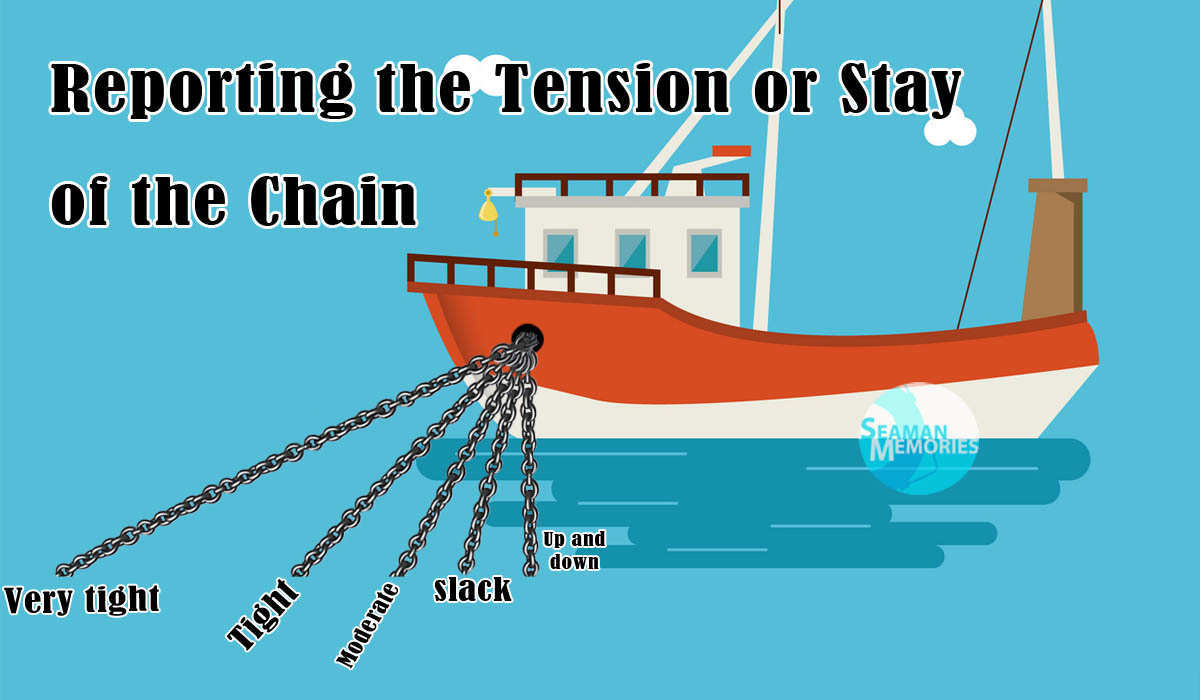
So how do you report the direction and stay of the chain?
“Chain leading twelve o’clock, tight.”
“Hello Bridge, the chain is up and down.”
“Chain leading under the bow.”
“Captain, the chain leading three o’clock, moderate.”
“Chain is one o’clock, very tight!”
Reporting the chain direction enables the Bridge Team to know where the position of the anchor is relative to the ship’s bow.
It also shows how the vessel responds to the waves, currents, and swell.
Meanwhile, the stay gives information about the tension of the anchor chain.
Heaving Up the Anchor
Once the ship receives berthing prospects or voyage orders, her anchor must be brought up and secured.
Easy as it may seem, there are challenges to this operation especially during bad weather.
With that in mind, it is better for ships to heave up their anchor before they start dragging.
Anchor Heave-Up Techniques
The first thing to do when heaving up the anchor is to have the engines ready. Then, the heaving up commences.
Anchor winches have two modes for heaving- high speed and low speed.
High speed (or high gear) heaves the anchor chain faster but this mode has less heaving power. Low speed (or low gear) on the other hand, has more heaving power but heaves slower.
Switching within these two modes is advisable depending on the tension of the chain.
Once the windlass is engaged, the brake loosened, the bow stopper is clear, and the command to heave up is given, the heaving up operation commences.
Report. Observe. Report.
The most important job of the anchor party is to report every change of direction and change of tension in the anchor chain.
When the chain is very tight, the bridge team must give ahead engines to lessen its tension. Keep the stay between moderate and up and down to enable smooth heaving up of the anchor.
Rudder angles must also be used to “follow” the direction of the chain.
It is advisable to keep it as twelve o’clock as possible. For the starboard anchor, one o’clock is also okay and eleven o’clock for the port anchor is fine.
Furthermore, report whenever each shackle is on board.
Unable to Heave Up
Difficulty in heaving up the anchor usually happens in bad weather.
If the windlass is unable to pick up the chain, switch to low gear mode. You can actually see and hear if the tension within the chain is very strong.
When either mode is unable to heave up or has difficulty picking up, always inform the bridge so they can apply helm and engine power.
Muddy Chains? Fire Pump!
Sometimes, the chain could be covered in mud. Ask the Bridge team to start the fire pump so the anchor wash can wash it off.
If the mud is too thick, heave up the chain slowly to give it time for washing.
Too much mud inside the chain locker could block the ejector pump.
Have a safe anchoring wherever you may be.
May the winds be in your favor.


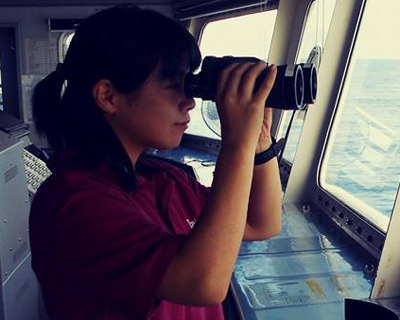
0 Comments